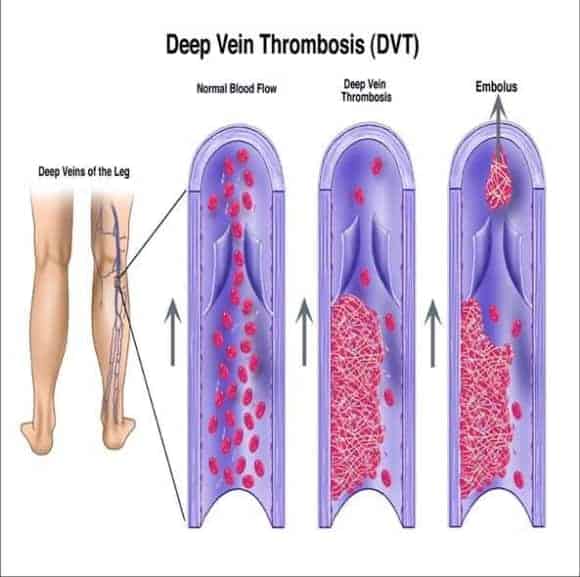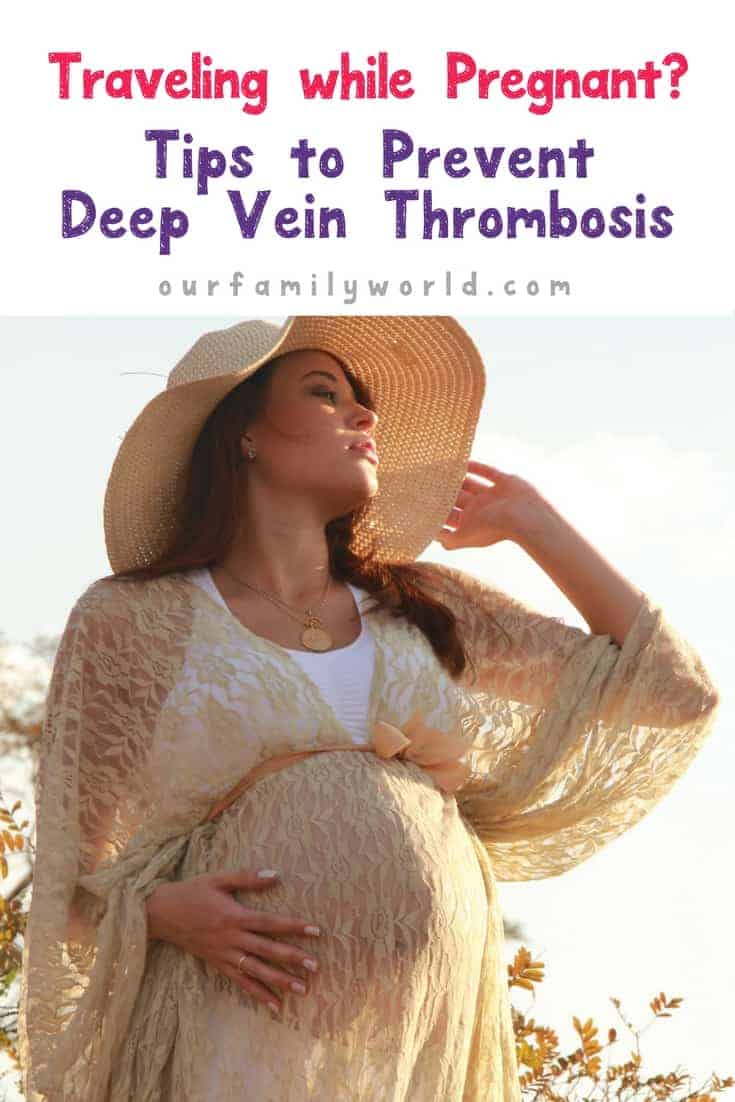Deep vein thrombosis is a potentially serious condition that can lead to embolism, stroke and heart attack. Even when it doesn’t cause such severe problems, it can lead to the formation of varicose veins. Check out these expert tips on how to prevent deep vein thrombosis.
Flying has long been associated with Deep Vein Thrombosis (blood clots), and the development of varicose veins. Deep Vein Thrombosis is the formation of a blood clot in a deep vein. Varicose veins are large, visible veins that have been abnormally stretched are swollen, and protrude from the skin in a rope-like manner. They are generally a light blue color, and can cause the legs to feel heavy and tired. Though actually developing blood clots or a varicose vein after one flight is very rare, it is beneficial for women to optimize circulation while traveling. Doing so helps to avoid fatigue and swelling of the legs, and decreases the chance of forming a blood clot. Below, I’ve included five tips to optimize circulation and decrease the risk of blood clots during long periods of travel.
Tips to Prevent Deep Vein Thrombosis

- Stay Active: During a flight, walk around every hour to promote circulation. If driving long distance, be sure to make stops to stretch out along the way
- Rotate and Flex: Rotate your ankles and feet whenever possible, and flex your toes to promote leg vein circulation
- Elevate Your Feet: Raise your feet 6 to 12 inches above your heart whenever possible to assist circulation.
- Avoid High Salt Foods: Unhealthy foods packed with salt can cause constipation, which puts pressure on the venous system
- Wear Compression Stockings: Compression stockings act like an added layer of muscle, aiding the performance of the “second heart” and venous circulation.
For those who have already formed varicose veins, there are treatment methods that can eliminate the veins with no pain or downtime. I recommend sclerotherapy in most cases. Sclerotherapy is a painless injection treatment that collapses the vein, which reabsorbs back into the blood stream. There are different types of sclerotherapy, including laser-assisted sclerotherapy (the least invasive and most advanced), foam sclerotherapy for larger, more difficult to treat veins, and ultrasound guided sclerotherapy for large, deep, veins that once needed more surgical treatment.
Sclerotherapy is an excellent treatment option for those with spider veins as well. Spider veins are broken capillaries that exist just below the surface of the skin and generally appear on the face or legs. They appear web-like and are typically blue, red or purple in color. These veins are sometimes a warning sign for potential varicose veins, so I recommend having them treated as soon as possible. If they are not treated, they get worse over time.
All women should be mindful of improving circulation regardless of travel plans. Mothers spend a lot of time on their feet, so it is common for them to develop varicose veins over time.
About Luis Navarro, M.D.
Diplomate: American Board of Phlebology
Dr. Luis Navarro, Director of The Vein Treatment Center in New York, NY, and one of the most well-respected and established physicians in the country, has devoted his life’s work to the treatment of venous disorders (varicose and spider veins). He founded the Vein Treatment Center in 1982, where he currently holds his practice. He developed a novel painless approach to treating varicose veins called Modern Sclerotherapy that merges minimally noninvasive techniques to achieve the maximum cosmetic results. Dr. Navarro’s facility, the Vein Treatment Center, remains one of first and only facilities exclusively devoted to the treatment of venous disorders.



I agree with this article. The sclerotherapie especialy with foam works very well for any varicose vein size or allmost. In the worst case, laser vein treatement can help for very big leg veins. We offer all these treatment in our vein clinic. The surgery for veins (stripping) is rarely done because of general anesthisia.
Good article
Hello. I am a phleblogist in Montreal, Canada. I do varicose veins foam injections (sclerotherapy) and laser treatment for varicose veins (EVLT). This is a excellent review by Dr Navarro. Thanks
If you had a deep vein trombosis, you can ask your doctor to pescribe you Fraigmin one dose.
This is why I can’t stand sitting for long periods of time on planes. I do the rotate feet trick, but definitely will try the other tips you mentioned. Thank you!
Very interesting! I think I may have trouble with veins down the road. I didn’t get a single stretch mark while pregnant, but I did develop some veins on my thighs. I think they’re spider veins, but they could be varicose. I had bad swelling and circulatory issues while pregnant, so I’m concerned about all of that with subsequent pregnancies.
Oh my word I had never heard of such a thing and we travel ALL the time. Thank you!
I developed my first varicose vein while pregnant with my first child in 1995. I was tested for DVT years ago and I’ve since had several venous procedures since.
Thanks for the tips! I had no clue about some of these.
This comes just in time for our trip down to Texas in a few weeks. Would something like this happen to little kids (5 and 4 years of age)?
I really had no idea this was even a problem but this looks serious! Thank you for the insight. Now I know what to do to prevent it.